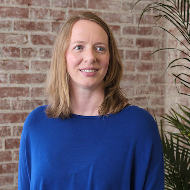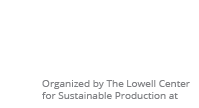A4 Webinar - October 25, 2019

A4 Webinar Series: Different Tools for Different Questions?
Using Alternatives Assessment, Risk Assessment, and Life Cycle Assessment
Occurred on: Friday, October 25, 2019
View Slides (pdf), Watch on YouTube
Additional Participant Questions Answered by Panelists Post-Webinar:
Question: When you are evaluating options, how is the commercial performance of all the alternatives being considered? Is it common that safer alternatives have worse commercial performance or higher costs and a sacrifice needs to be made?
Wolf: In the case of Seventh Generation, end user performance is critical. Consumers do not buy products that do not meet their price-performance expectations. Therefore, performance under laboratory conditions is evaluated for each alternative. If a formulation passes laboratory performance testing it is then evaluated in home use tests. In the world of home care products safety, performance, cost, and many other factors form a complex, multivariate problem. It is not possible to vary one parameter and measure a second while holding all other variables constant. There are many paths to creating safe, high performance products at a consumer relevant price. The key is to define which company objectives have priority and formulating to those objectives.
Sommer: We do a fair amount of laboratory and production testing to understand the compatibility of alternatives. We’ve seen a mixed bag so far. Some safer alternatives are just as good if not better than their more hazardous counterparts. We do eliminate highly hazardous materials like chromium-based tanning agents from the outset, so we may be seeing less variability between alternatives than if we had included those in our testing.
Question for Superior Essex: Have you considered using TPE to replace PVC? If so, what are pros/cons related to PVC or FEP?
Bevan: To my knowledge we have not considered TPE.
Question for all presenters: Workers have an interest in these processes/methods. In other occupational health areas, worker participation is key or required. Where does it fit with your use of these assessment processes? How do they participate? At which points?
Wolf: Seventh Generation does not own manufacturing facilities. We inspect our manufacturing partner’s facilities and expect our manufacturing partners to provide a healthy and safe workplace to prevent accidents and injury arising out of, linked with, or occurring in the course of work or as a result of their operations.
Sommer: In conjunction with our EHS team, we involve our workers in aligning on the right worker protection necessary to handle chemistry and operate equipment. When a new chemical or process is proposed, our scientists and engineers draft what we call a Job Hazard Analysis (JHA). That JHA outlines the necessary steps and protection required for the task, and who is authorized to do it. It’s then reviewed, edited and approved by our EHS team. Corporate Responsibility also gets involved in this especially when it pertains to chemicals. We have an internal ticketing system to request a chemical evaluation anytime a chemical or new use of a chemical is introduced.
Description:
Alternatives assessment, risk assessment and life cycle assessment are allied fields that each aim to improve human and environmental health by understanding and addressing impacts. Despite the overlapping expertise in these approaches, each field goes about achieving its objectives with a different set of methods. The goal of the Association for the Advancement of Alternatives Assessment (A4) fall 2019 webinar is to understand what makes alternatives assessment, risk assessment and lifecycle assessment both distinct and complementary. Using an interactive panel format, we will hear from industry experts that use each of these three approaches to assist achieving their company’s chemicals management and sustainability programmatic responsibilities.
Featured Panelists
|
|
 |
 |
Martin WolfDirector of Sustainability and Authenticity at Seventh Generation |
Annie BevanGlobal Head of Sustainability at Superior Essex |
Libby SommerDirector of Corporate Responsibility at Bolt Threads |
Resources:
What's the difference between risk assessment and alternatives assessment?
Whittaker MH. Risk assessment and alternatives assessment: comparing two methodologies. Risk Analysis. 2015 Dec;35(12):2129-36.



